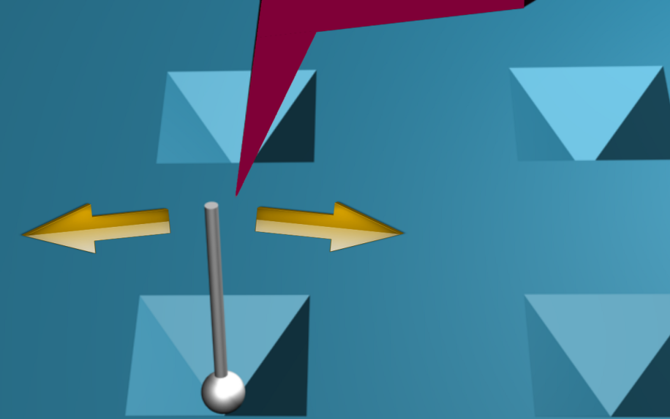The creation of nanorobots has been featured extensively in science fiction novels. In reality, however, we have only a few fairly simple prototypes. Regardless, there are hopes that one day we will begin using nanorobots to treat certain conditions in humans. Like life-size robots, nanorobots also need components, for example, joints. Physicists at the University of Tartu have made great strides towards developing these joints.
The trend in technology is moving towards smaller and smarter devices. Therefore, the components of devices need to get smaller as well. However, fundamental natural laws present an obstacle as they operate a bit differently on nanoscale than in our usual everyday life.
Nanostructures have very large surface energies and to reduce these, the smaller particles merge into larger “lumps”. In other words, they agglomerate.
Moving these particles in relation to each other or relative to the base can be very complicated.
Often the contact between the particle and its base is stronger than the strength of the material itself and the structure is broken before the particle shifts. This is one of the reasons why no fully functioning nanoscale machines have been constructed and put into operation yet.
Recently, the journal Nanotechnology published an article [1] by scientists at the UT Institute of Physics in which they demonstrated a functioning “joint”. Its physical measurements were below 100 nm.
How small is 100 nanometres?
It can be compared to a human red blood cell, which is 6–8 µm or 6,000–8,000 nm, or to a human hair, which is ten times bigger.
For the study, scientists first etched the surface of silicon to create pyramid-shaped sockets that work as joint cavities and then placed gold or silver “nano-dumbbells” and “nanopins” on this surface.
For the dumbbell-shaped nanostructures they used a short laser pulses to heat nanowires. This melted one or both of the ends into spherical balls without melting the whole nanowire.
With the help of a special nanomanipulator inside the scanning electron microscope, the nanopin was placed into the pyramidal cavity so that the ball was located in the middle of the cavity and thus the ball and the socket formed a stable moving system.

Sergei Vlassov, a senior research fellow at the UT Institute of Physics, explained that with this solution the contact surface is very small and this means that friction is minimal (an order of magnitude of 1 nN). It enables the joint to be tilted easily and stably without any deformations and, at the same time, to maintain its stable position in the middle of the pyramid-shaped socket.
“Assembling and testing such a joint was not a trivial task and turned out to be possible only due to the long-term experience of our work group in manipulating individual nanostructures. This took time and a bit of patience. In the end, however, we were able to demonstrate that by using high-tech methods it is possible to overcome the large adherence and friction that occurs on the nanoscale.”
References: [1] S. Vlassov, S. Oras, M. Antsov, J. Butikova, R. Lõhmus, B. Polyakov, Nanotechnology 2018, 29, 195707.
Featured image: An illustration of how the nanojoint works. Author/source: UT Institute of Physics.
The translation of this article from Estonian Public Broadcasting science news portal Novaator was funded by the European Regional Development Fund through Estonian Research Council.
 Back
Back



